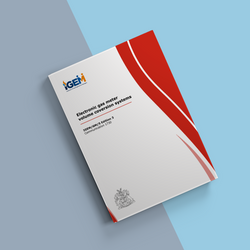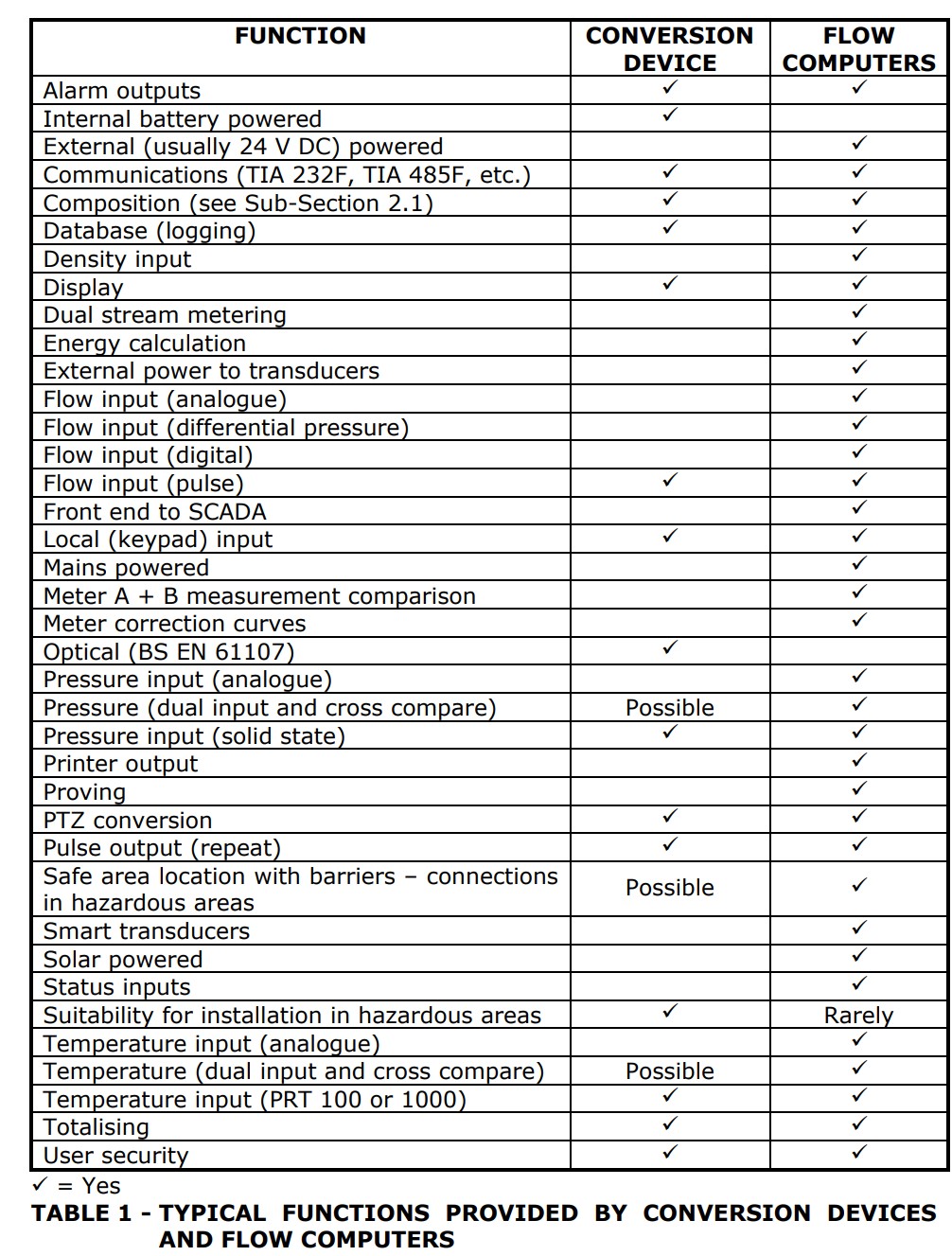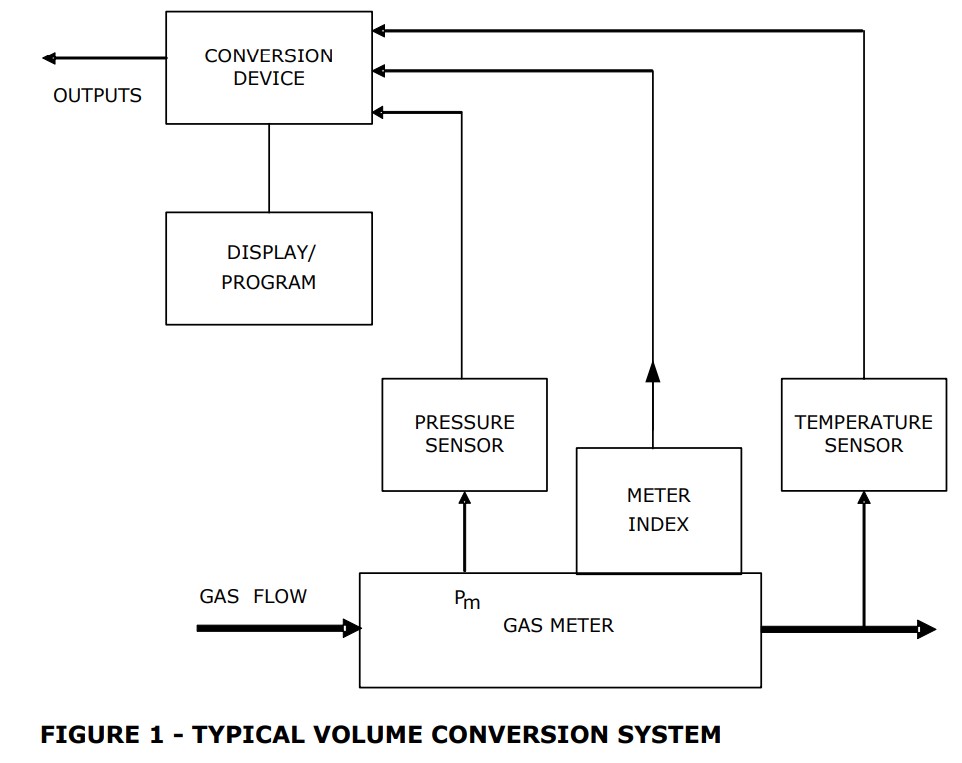IGEM/GM/5 Edition 4 - Electronic gas meter volume conversion systems

This standard covers electronic gas volume conversion systems. However, many principles may equally be applied to flow computers and the procedures for flow computers are included where appropriate. It is not intended to be used in conjunction with high accuracy meter installations where, for example flow computers are configured to receive live data of the gas composition.
It covers the installation, commissioning, validation, monitoring and maintenance of systems that convert gas volume readings to base conditions by taking into consideration temperature, pressure, and if appropriate the compressibility of the gas. In general they are not used at an Operating Pressure exceeding 7 bar. The systems covered within may be designed for installation in either indoor or outdoor environments. Suitably designed systems may be installed in hazardous areas.
Specifically, it contains details of:
- Legal considerations such as Gas Safety (Installation and Use) Regulations and the Health and Safety at Work etc. Act
- Pre-installation tests
- Design and installation, including positioning and connecting of the components, along with security of the conversion systems
- Commissioning and system performance checks
- Validation of a system
- Monitoring, inspection and maintenance of systems
- Records and reporting.
Introduction
1.1 This Standard supersedes IGE/GM/5 Edition 2, Communication 1669, which is obsolete.
1.2 This Standard has been drafted by an Institution of Gas Engineers and Managers (IGEM) Panel, appointed by IGEM’s Gas Measurement Committee, and has been approved by IGEM’s Technical Co-ordinating Committee on behalf of the Council of IGEM.
1.3 This Standard encompasses the selection, installation, commissioning, validation, subsequent monitoring and maintenance of gas volume conversion systems, installed with meters of maximum operating pressure (MOP) not exceeding 100 bar. It is important that this Standard is read in conjunction with IGEM/GM/7A and, where necessary, IGEM/GM/7B.
1.4 This Standard reflects good practice but does not confer immunity from relevant legal and statutory requirements, particularly those relating to the use of meters for the sale of gas. If the requirements are followed in full for a particular installation, the measurement accuracy of that installation will be both predictable and of a realistic commercial standard.
1.5 Why fit a gas volume conversion system?
When considering the installation of a gas volume conversion system, various factors need to be taken into account:
- legal requirements to meet statutory legislation
- contractual obligations
- commercial requirements to comply with the gas transporter’s (GT’s) Network Code
- if the meter is operating with variable pressure and/or temperature conditions that make the use of fixed or calculated conversion factors impractical, an assessment of benefit from the installation can be measured against the installation costs, such as:
- reduced exposure to commercial risk
- reduced uncertainty against fixed conversion factors
- reduced billing uncertainty by more accurate measurement of gas consumed
- significant deviations at the meter site from average billing conditions.
1.6 As part of the commercial assessment for the installation of a gas volume conversion system, it is necessary to understand the effects that temperature, pressure and compressibility can have on overall accuracy of a metering system. More detailed guidance on these issues, together with worked examples, is given in Appendix 3.
1.7 It will also be necessary to consider the level of performance required from the conversion system, both at initial commissioning and during service.
All new conversion equipment has to meet the requirements of BS EN 12405 or equivalent. Equipment purchased to BS EN 12405 can then be supported by calibration certificates. BS EN 12405 is harmonised with the Measuring Instruments Directive (MID) which demands a maximum permissible error (MPE) when placing into use, under operating conditions, of ± 1% and, at constant laboratory conditions, an accuracy of ± 0.5%. BS EN 12405 permits a deviation of 0.5% of the MPE at reference conditions during durability testing. Appendix 3 provides guidance on the use of BS EN 12405 in this respect.
1.8 MID represents a major change to European legislation on gas meters and volume conversion systems. Many European Community (EC) countries outside the United Kingdom (UK) and the Republic of Ireland regard a volume converter as a metrological device, and it is sealed accordingly. IGEM/GM/5 contains requirements that may require that seal to be broken. If IGEM/GM/5 is being used outside the UK or the Republic of Ireland, local advice has to be taken as to the significance of seals.
While there are legal requirements in the UK for the uncertainty performance of primary meter elements, there are no similar requirements for the conversion system, the combined meter and conversion system, or for in-service tolerance.
As an audit trail, for meters outside Section 17 of the Gas Act, a calibration certificate has to be held as part of the record system.
Following this Standard is likely to ensure that the conversion system remains within the requirements of BS EN 12405.
1.9 In the preparation of IGEM/GM/5 Edition 3, account has been taken of the improvements in electronics and transducer technology which is reflected in improved performance and stability of modern measurement systems.
The basic tenet of this Standard is that the measurement accuracy of modern conversion equipment can be as good as, or better than, calibration equipment used in far-from-ideal field conditions.
As a result, IGEM/GM/5 states that on-site re-calibration is not acceptable and that only performance validation checks are acceptable in the field. Where recalibration is considered necessary, IGEM/GM/5 requires that the conversion system be removed from service and returned to the manufacturer or to an approved calibration facility where controlled calibration and test facilities exist.
1.10 This Standard applies to newly-installed gas volume conversion systems. For an existing system, the principles given for validation, maintenance etc. may be used where appropriate. However, activities such as in-situ adjustment may be necessary on older systems.
1.11 The de-regulation of the metering market has led to the need for new sets of rules and Standards. This has been addressed by the Ofgem Meter Asset Manager Code of Practice (MAMCoP), developed to cover whole life management of gas meter installations. The OFGAS CoPs 1/a, 1/b and 1/c which cover the installation of the meter only, will continue to apply. Businesses installing meter installations are required to be an Ofgem Approved Meter Installer (OAMI). There has also been a review and harmonisation of industry standards and CoPs to reflect the needs of the changing market.
Note: Under the new arrangements, an Ofgem-approved Meter Asset Manager (MAM) does not have to be an OAMI, but has an obligation to use an OAMI to install a meter.
1.12 This Standard makes use of the terms “should”, “shall” and “must” when prescribing particular procedures. Notwithstanding Sub-Section 1.15:
- the term “must” identifies a requirement by law in Great Britain (GB) at the time of publication
- the term “shall” prescribes a requirement which, it is intended, will be complied with in full and without deviation
- the term “should” prescribes a requirement which, it is intended, will be complied with unless, after prior consideration, deviation is considered to be acceptable.
Such terms may have different meanings when used in legislation, or Health and Safety Executive (HSE) Approved Codes of Practice (ACoPs) or guidance, and reference needs to be made to such statutory legislation or official guidance for information on legal obligations.
1.13 The primary responsibility for compliance with legal duties rests with the employer. The fact that certain employees, for example “responsible engineers”, are allowed to exercise their professional judgement does not allow employers to abrogate their primary responsibilities. Employers must:
- have done everything to ensure, so far as it is reasonably practicable, that “responsible engineers” have the skills, training, experience and personal qualities necessary for the proper exercise of professional judgment • have systems and procedures in place to ensure that the exercise of professional judgment by “responsible engineers” is subject to appropriate monitoring and review
- not require “responsible engineers” to undertake tasks which would necessitate the exercise of professional judgment that is not within their competence. There should be written procedures defining the extent to which “responsible engineers” can exercise their professional judgment. When “responsible engineers” are asked to undertake tasks which deviate from this, they should refer the matter for higher review.
1.14 It is now widely accepted that the majority of accidents in industry generally are in some measure attributable to human as well as technical factors in the sense that actions by people initiated or contributed to the accidents, or people might have acted in a more appropriate manner to avert them.
It is therefore necessary to give proper consideration to the management of these human factors and the control of risk. To assist in this, it is recommended that due regard be paid to HS(G)48.
1.15 Notwithstanding Sub-Section 1.12, this Standard does not attempt to make the use of any method or specification obligatory against the judgement of the responsible engineer. Where new and better techniques are developed and proved, they should be adopted without waiting for modification to this Standard. Amendments to this Standard will be issued when necessary, and their publication will be announced in the Journal of IGEM and other publications as appropriate.
1.16 Requests for interpretation of this Standard in relation to matters within its scope, but not precisely covered by the current text, should be addressed in writing to Technical Services, IGEM, Charnwood Wing, Ashby Road, Loughborough, Leicester, LE11 3GH and will be submitted to the relevant Committee for consideration and advice, but in the context that the final responsibility is that of the engineer concerned. If any advice is given by or on behalf of IGEM, this does not relieve the responsible engineer of any of his or her obligations.
Scope
Acronyms and abbreviations Symbols
HF = high frequency
Pm = pressure tapping
LF = low frequency
MOP= maximum operating pressure
OP = operating pressure
PTZ = pressure, temperature, compressibility
SCADA = Supervisory Control and Data Acquisition
2.1 This Standard covers electronic gas volume conversion systems. However, many principles may equally be applied to flow computers and procedures for flow computers are included where considered appropriate.
This Standard is not intended to be used in conjunction with high accuracy meter installations where, for example, flow computers are configured to receive live data of gas composition. Such installations are the subject of other standards, for example IGE/GM/8 and IGE/GM/4 and, as appropriate, national and international standards.
Note: Typical differences in functions of volume conversion devices and flow computers are given in Table 1.
2.2 This Standard covers installation (including appropriate pre-installation tests), commissioning, validation, monitoring and maintenance of systems that convert gas volume readings to base conditions by taking into account temperature, pressure and, if appropriate, compressibility of the gas. While conversion devices may be installed with meters of MOP up to 100 bar, in general they are not used at operating pressure (OP) exceeding 7 bar (when a flow computer is used).
Note 1: Normally, the conversion devices referred to in this Standard are battery powered, whereas flow computers are mains powered.
Note 2: A typical volume conversion system is shown in Figure 1.
2.3 The conversion devices covered by this Standard usually process low frequency (LF) pulsed signals from a LF transmitter within, or external to, a meter, together with other inputs to provide a digital display of converted volume.
Density correction is outside the capability of such conversion devices.
Note 1: Traditionally, meters have been supplied with pulse generation created by a magnet incorporated in the index mechanism and a magnetically-operated switch (usually, a reed switch). However, some more modern meters use optical sensing or electronic sensors of other forms. While many of these are compatible with the conversion devices available, care has to be taken to ensure that this compatibility is demonstrated and, where appropriate, correct polarity is observed when making electrical connections to these assemblies.
Note 2: IGEM/GM/7A provides guidance on all electrical connections to gas meters.
Note 3: In general, flow computers process high frequency (HF) pulsed signals.
Note 4: Further details on flow computers are contained in IGE/GM/4.
2.4 The conversion systems covered by this Standard may be designed for installation in either indoor or outdoor environments. Conversion devices of suitable design may be installed in hazardous areas.
Note: In general, flow computers are not installed in hazardous areas.
2.5 A conversion device may, or may not, be an integral part of a meter but, in any event, it will provide converted readings in addition to the actual index provided on the meter.
2.6 This Standard, although not intended to form a specific site procedure, can, nevertheless, be used as the basis for such a procedure.
2.7 Normally, the installation of conversion systems will not involve consideration of IGE/SR/15 but, when installed as part of another control system, for example emergency shut-down of gas supply, IGE/SR/15 may need to be taken into account.
2.8 All pressures are gauge pressures unless otherwise stated.
2.9 Italicised text is informative and does not represent formal requirements.
2.10 Appendices are informative and do not represent formal requirements unless specifically referenced in the main sections via the prescriptive terms “should”,


